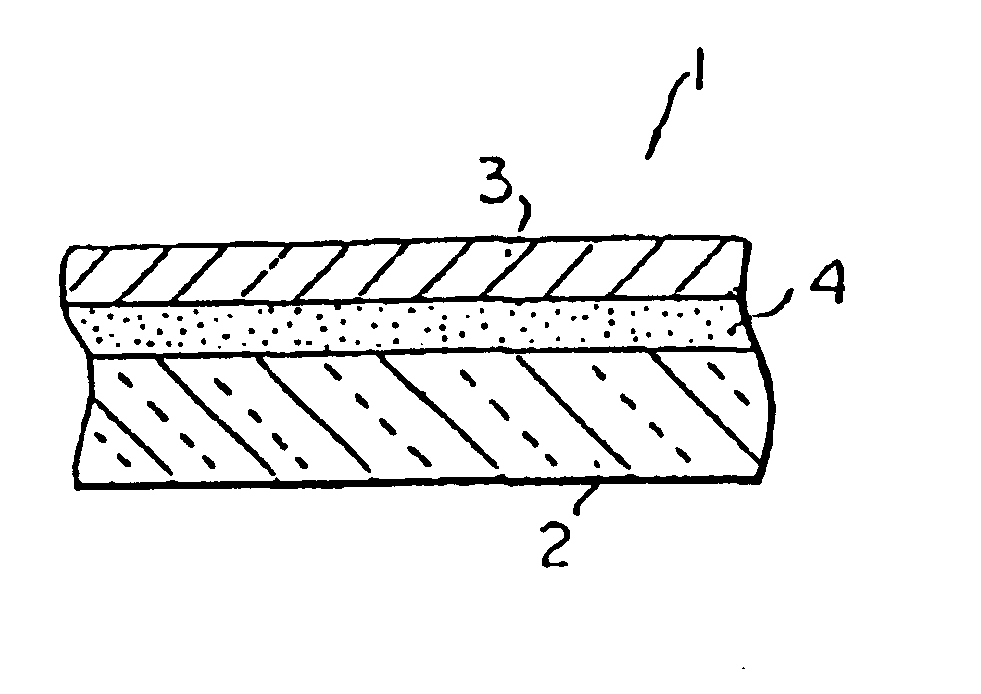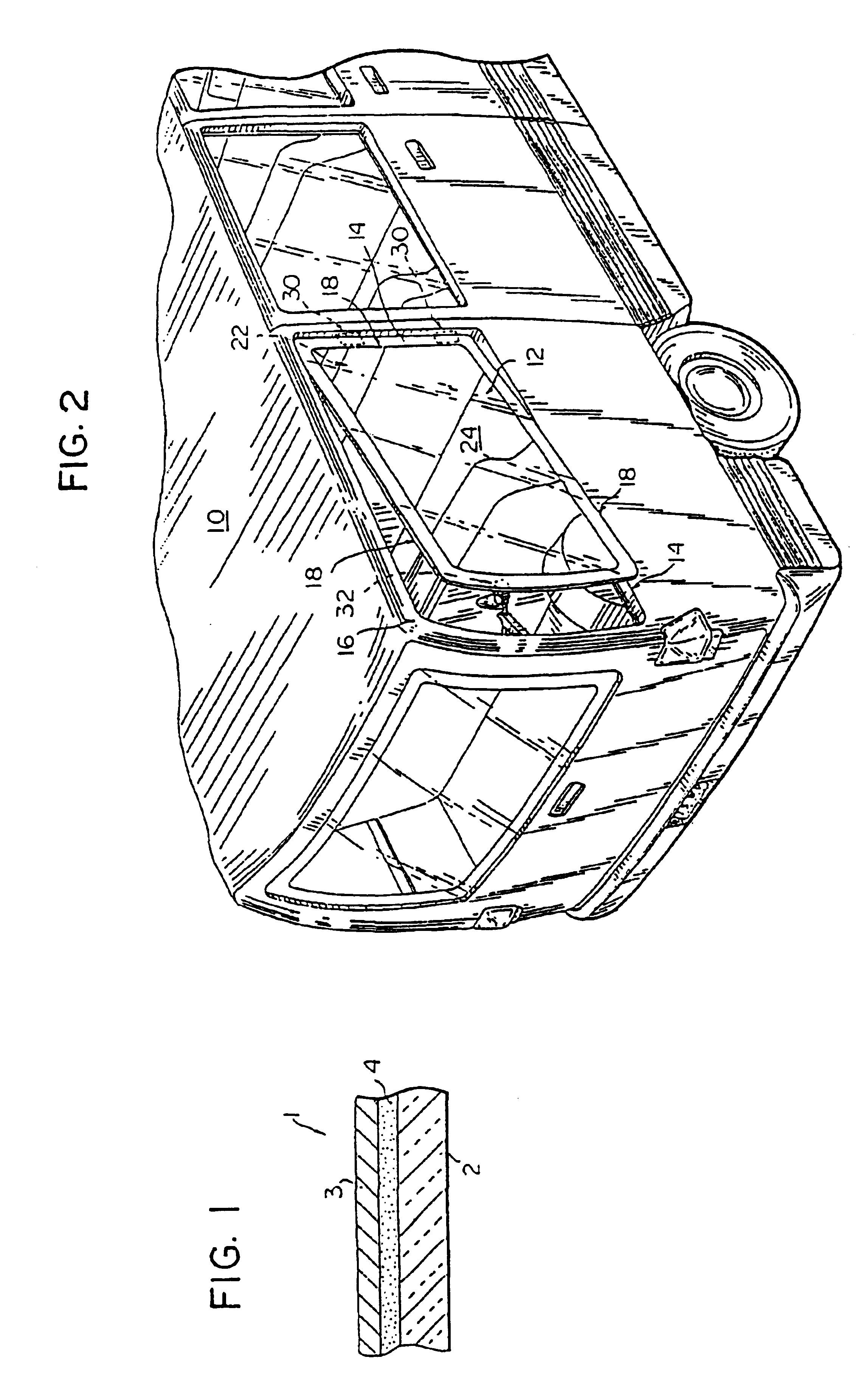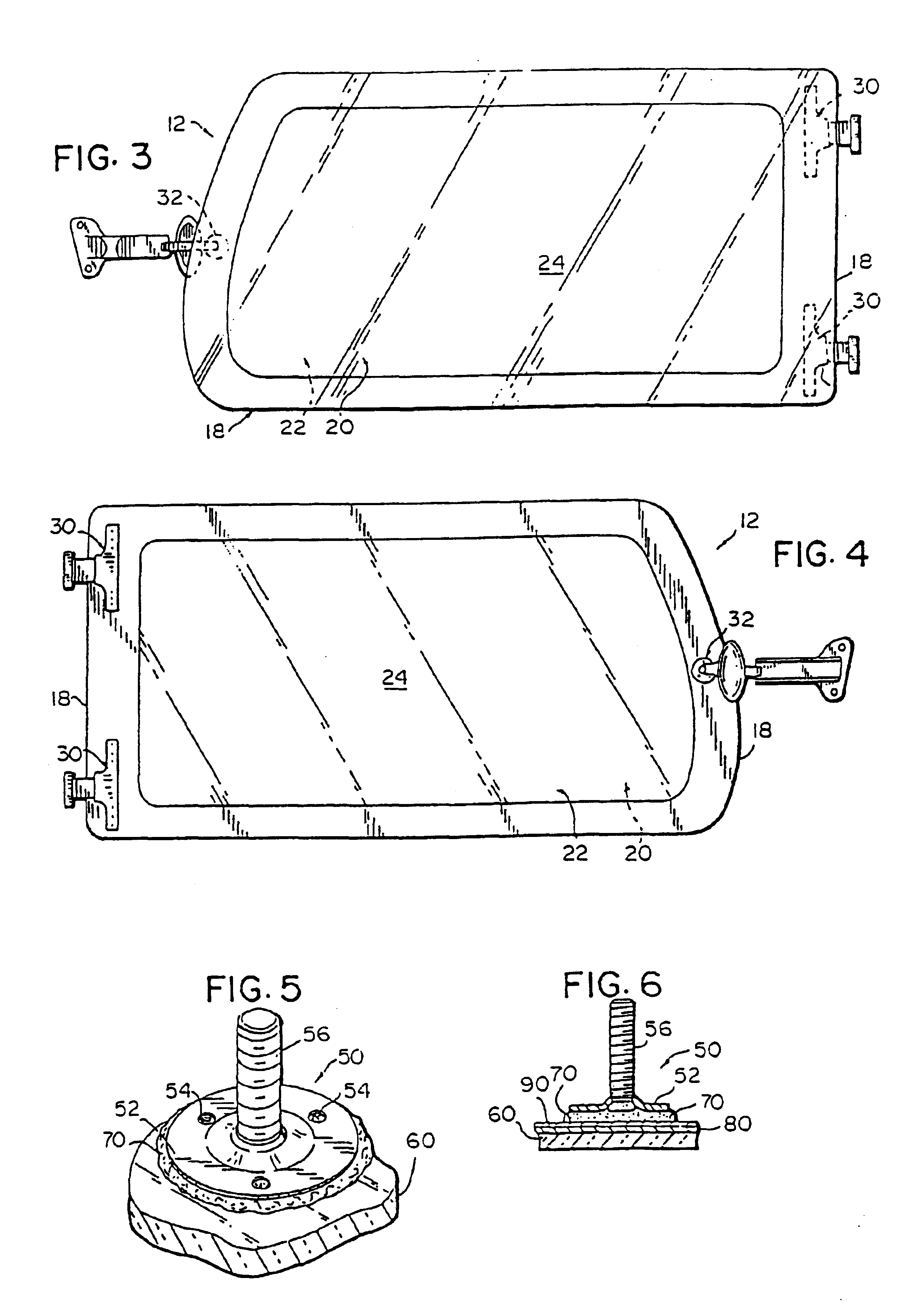Bonded vehicular glass assemblies utilizing urethane adhesive and method for making same
a technology of urethane adhesive and urethane, which is applied in the direction of windows, roofs, synthetic resin layered products, etc., can solve the problems of high localized load on assembly components and affixing means, and neither of these approaches is entirely satisfactory, and each is relatively expensiv
- Summary
- Abstract
- Description
- Claims
- Application Information
AI Technical Summary
Benefits of technology
Problems solved by technology
Method used
Image
Examples
Embodiment Construction
A preferred embodiment of one aspect of the present invention for bonded glass assemblies is an automobile glass panel having a layer of a rapid set, rapid cure, two-component urethane disposed on the glass panel. Layers of such adhesives and others described herein have remarkable characteristics upon curing that enable them to be used as joints on automobiles. FIG. 1 illustrates a cross section of a vehicular window assembly 1 comprising a glass substrate 2 and an attachment member 3 bonded thereto by a layer 4 of the rapid set, rapid cure, two-component urethane adhesive disposed between the glass substrate and the attachment member or portions thereof.
In many of the preferred embodiments described herein, the two-component urethane adhesives utilized are “rapid set,” and “rapid cure.” Rapid set refers to a property exhibited by the two-component system, such that after mixing the components and relatively promptly contacting the adhesive mixture with the objects to be bonded tog...
PUM
| Property | Measurement | Unit |
|---|---|---|
| temperature | aaaaa | aaaaa |
| surface area | aaaaa | aaaaa |
| surface area | aaaaa | aaaaa |
Abstract
Description
Claims
Application Information
 Login to View More
Login to View More - R&D
- Intellectual Property
- Life Sciences
- Materials
- Tech Scout
- Unparalleled Data Quality
- Higher Quality Content
- 60% Fewer Hallucinations
Browse by: Latest US Patents, China's latest patents, Technical Efficacy Thesaurus, Application Domain, Technology Topic, Popular Technical Reports.
© 2025 PatSnap. All rights reserved.Legal|Privacy policy|Modern Slavery Act Transparency Statement|Sitemap|About US| Contact US: help@patsnap.com



